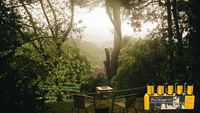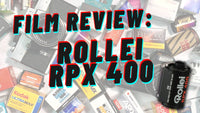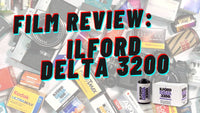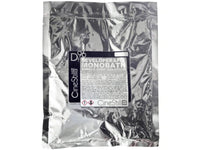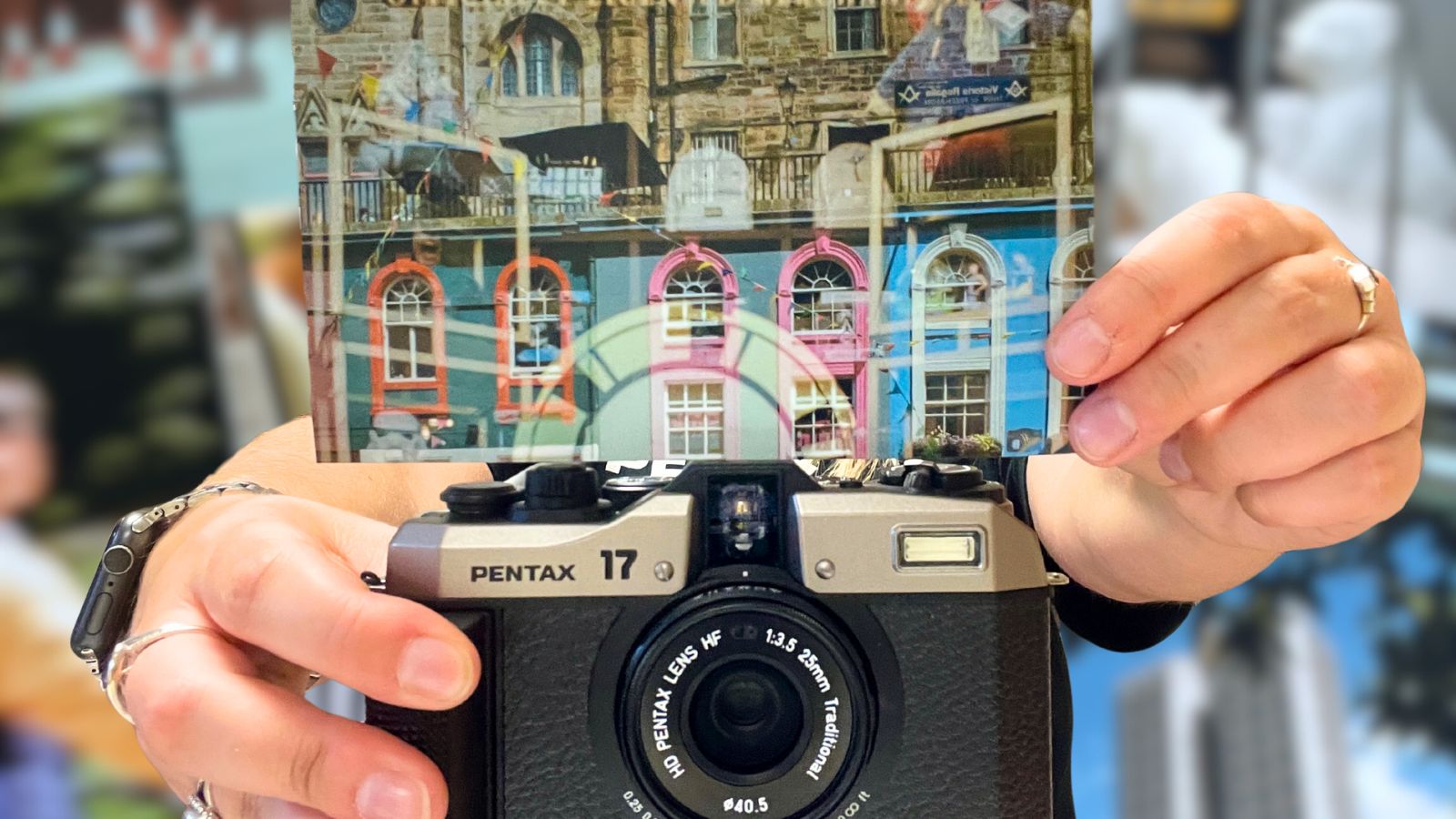As part of our second Big Film Photowalk on 28th June 2025, we ran a free photo competition with Pentax and Kodak prizes up for grabs, judged by Antonio Pisani from Pentax/RICOH. From over 200 entries shot on Kodak Pro Image 100, he selected seven honourable mentions and three winners - read on to see the chosen images...
Recent posts
Shop the article

The Best 35mm Film for Beginners
By Paul McKay
So you're going to start shooting film?
Congratulations! You won't regret the decision, an amazing analogue adventure awaits...
But understanding what film is going to work best for you and the style of shooting you adopt can seem like a daunting process, due to the vast amount of film on offer and the range of prices you can pay. Over the course of this post, I will be helping you to understand which film stock can get you going as a beginner film photographer - and offer guidance for achieving impressive results every time you shoot on film.
Seeing as there is a wide variety of films types and stocks out there, we shall focus on the "bog standard" type of film: colour and black and white negatives. They are easy to get hold of and also developing them is far simpler. We will also assume that you're shooting 35mm - the typical 'entry' format for film photography.
[Ed: if you're unsure which film format is right for your camera then head over to our Beginner's Guide to Film before continuing!]

Shot on Kodak Colorplus 35mm
What kind of photography do you want to shoot?
This is an important first consideration: thinking about the situations in which you enjoy photography and the aesthetic or 'look' that you're going after.
Each film stock creates a different aesthetic to another. For example some deliver a muted tone across an image whereas others will bring out certain colours more, creating a colour popping effect across an image. Others are able to hold their quality when you're using the flash; others will perform best in bright sunlight; still others in the dark shadows!
Although there is no right or wrong way to using film in photography, there are certain films stocks that are designed to look a certain way and create an aesthetic that it's visually intended for. Consider the subject matter you are shooting, as it's important to select the right film for the aesthetic you want to achieve.
However, there are good allrounder films that can achieve a very desirable look within a beginner budget and also with very little experience around film. Let's start with Kodak’s Colorplus film. I believe it can come in extremely useful for beginners due to the look it provides with a variety of different subject matters. It's flexible and affordable - let's dive right in!
My experience of Colorplus
I used Kodak Colorplus 35mm a considerable number of times when starting back in film photography and continue using it from time-to-time today. I began to see quite early on that it could be applied to a number of different environments and subject matters within photography. This was due to the subtle palette of the film itself - it was unlikely to overwhelm a subject with excessive colours or contrast but is still strong enough in the primary colours to create impactful images.
You don't need to worry about using the film with portraits: we can see how we haven’t lost any natural tones in the face, which is great if you wanted to shoot film photography in a wedding or event. Side note: do bear in mind shooting with film at a wedding or event can bring a whole host of different logistical challenges, which we will save for another day!

Shot on Kodak Colorplus 35mm
Colorplus film works well in a number of different environments and settings but preforms best in sunlight or on a bright day. I often find the colours seem to have more of an impact on the visual elements on the image. Other than weddings or events, which this film can be applied to if you so wish, this film is easily applied to a more relaxed subject matter or surrounding. Something like a landscape, like a beach or the countryside, where you will see the gorgeous overall aesthetic and deep contrast within the shadows bring the scene to life.
What I enjoy the most about this film - other than being quite a quick and easy solution to finding a film for all situations - is the versatile nature of the film itself. It can go from a beach evening with friends to a dramatic landscape scene in the mountain region of deep north wales without dropping a beat. So you can load up your camera for the day or the weekend knowing that it won't let you down!

Shot on Kodak Colorplus 35mm
There is no right or wrong way to shoot this film, I have found there is not really a subject matter that this film does not fit into. If you pushed me for an optimal shooting situation then I would say a sunny environment. It takes full advantage of the colours present within the image and if I had to put a subject matter with this film or environment, then I would put it with portraiture and or a documentary subject matter. Or if you are just looking for a film to shoot you and your friends with away on a beach day, festival or on holiday then it's always worth packing a couple of rolls. Colorplus comes in different varieties, 24 or 36 exposures (shots) with a small difference in absolute cost. Personally I would go for more as there is nothing worse than running out of film at a crucial moment and the cost per photo is cheaper. But of course the 24 exp. can be helpful for testing new cameras or situations before committing a 'full' roll.
What about a Black and White beginner film?
Black and White photography was something I started with when I ventured into film photography back in school, so it was my personal beginner experience! I found starting with B&W extremely beneficial to the way in which I look at my subject matter as it forces you to consider what you want your image is going to say to the viewer. Colour can often be a crutch or distraction in a photograph - starting with B&W will help you avoid falling into that trap.

Shot on Ilford HP5 Plus 35mm
Beyond the learning-benefits I believe black and white can work extremely well in landscapes or architecture photography, due to the Blacks, Whites and Greys causing an intentional focus on the linear and natural shapes within the image.
With this in mind there a number of different black and white film stocks available for you to explore and enjoy, with varying levels of grain, contrast, response to light and type of chemicals. However, there are two that spring to mind as being perfect for beginners, readily available and easy to get processed.
B&W with colour development...
The first is an Ilford 35mm film called XP2 which is a black and white film that has a C41 process, meaning it can be developed through 'colour' chemcial processing. Don't worry about the details of this: the benefit is that it's possible to get these black and white films done within the hour in most high street developers, like Boots or Snappy Snaps. That’s if you don’t develop the film yourself. But if you are a beginner this is something I would imagine you’d look at doing later on in your film photography journey - unless you're particularly brave or committed!

Shot on Ilford XP2 35mm
However, this agility does come at a cost and it could be considered XP2 doesn’t give you the overall visual aesthetic that typical black and white does. You might notice this in the slightly washed out contrast and shadows that XP2 has; this can make the image slightly less dramatic and impactful in the final scan or print. But this still is still a great way of creating black and white images: not having to wait too long to get the negatives back and also understand how black and white images can change the way you look at your subject matter. So a fantastic place to start learning - and it's also available as XP2 120 film if you want to try medium format.
The Black and White Icon
Ilford’s HP5 is a 'standard' black and white film that a beginner could really get behind due to the nature of the film and the deep aesthetic that it provides. It is also the best-selling film in the UK market and regularly wins 'most-loved' awards! [Ed: in fact it is the only film in our range at the moment with more than 20 reviews that are ALL 5*!]
If we were to compare it to its XP2 counterpart, we can see we have more of a black and white characteristic to the film overall - stronger contrast and better character. This is definitely worth exploring when you start working with black and white as a budding film photographer. It adds an intensity to a range of subject matters, particularly portraits and landscapes.

Shot on Ilford HP5 Plus 35mm
There are downsides when working in the medium of true black and white photography and that is the processing of the films themselves with high-street shops. Other than XP2 which can be developed in a colour process, most black and white films have to be developed off site. So the shop will accept your films but will then send them off for central development - adding postage times and costs both ways.
This can be sometimes expensive and quite long winded, if you just want to see how your friends birthday party or holiday to Cornwall looked in black and white. Or you've been trying something and want to see fast results to understand how to adapt.
This is where you could consider the developing of your own black and white as it is the easiest of all the film processes to understand and try for yourself. Grab a package of B&W developing powder and you'll be away! But that's a topic for another blog post...
How important is Brand?
When it comes to which brand is best in film photography, it all comes down to personal preference and which stock you prefer the look of - specifically in regard to the photographic ideas and inspirations you have in your mind. The best film is the one that delivers your creative vision!
In saying that both major film companies, Fujifilm and Kodak have their own entry-level stocks that are meant to do the same job as one another. Fuji’s answer to Colorplus is Fujicolor C200, which has - on paper - very similar specs to Colorplus. However in the real world the colours within C200 tend to be less vivid and more washed out. With Colorplus we see more of a saturated tone with the colours throughout the film, no matter what the subject matter.
C200 vs Colorplus
From my own practice and what I have taken pictures of for a number of years now I have found C200 to be extremely useful in either documentary or landscape photography, as the more muted pallet of the film entirely creates more of a level aesthetic as there is nothing jumping out of the image in terms of over-saturated colour. This makes it possible to create work with this film that is totally about the subject matter and meaning of the photograph and not just the prospect it was shot on film.

Shot on Fujifilm C200 35mm
Whereas with Colorplus we do see how this film can be applied to a more colour-rich environment, as saturated colours are great in grabbing the viewers’ attention and making the most of the subject you are capturing. Moreover it comes down to personal preference over visual aesthetic of the photographs you want to take. Both C200 and Colorplus are films by different companies that can create remarkable images for a beginner photographer or seasoned pro at a very considerable price.
It's important enough to reiterate: there is no right or wrong within film photography, you can choose whatever film you want to the cover the subject matter you photograph. But there are ways you can get yourself into the swing of finding the right aesthetic for the job and starting with the basics in terms of film is never a bad first move into film photography.
Thanks for reading!
Stepping into the world of film - either at the beginning of your photography journey or when you already far down the path - is an exciting new prospect. Yes it can be daunting selecting the right film for the subject but my advice to you is simple. Choose a film stock based on the sample shots you like and stick with it for a while! You’ll be surprised what comes out but you'll also get to know it inside-and-out, and in a variety of different lighting situations. This will stand you in great stead when you then start to vary your analogue practice and experimenting.
I would say start with one of the above films: Colorplus, C200, XP2 or HP5 and really get a feel for film…. But do remember you don’t have a memory card, make every shot count.

Shot on Kodak Colorplus 35mm
All images (c) Elliot Knott. Instagram: @strictly_35mm. Any questions please comment below or message me directly - Elliot Knott.
Why not check out some other articles comparing and reviewing films for different situations as part of our 'Best Film...' Series
Ready to dive in?
Keep Reading
View all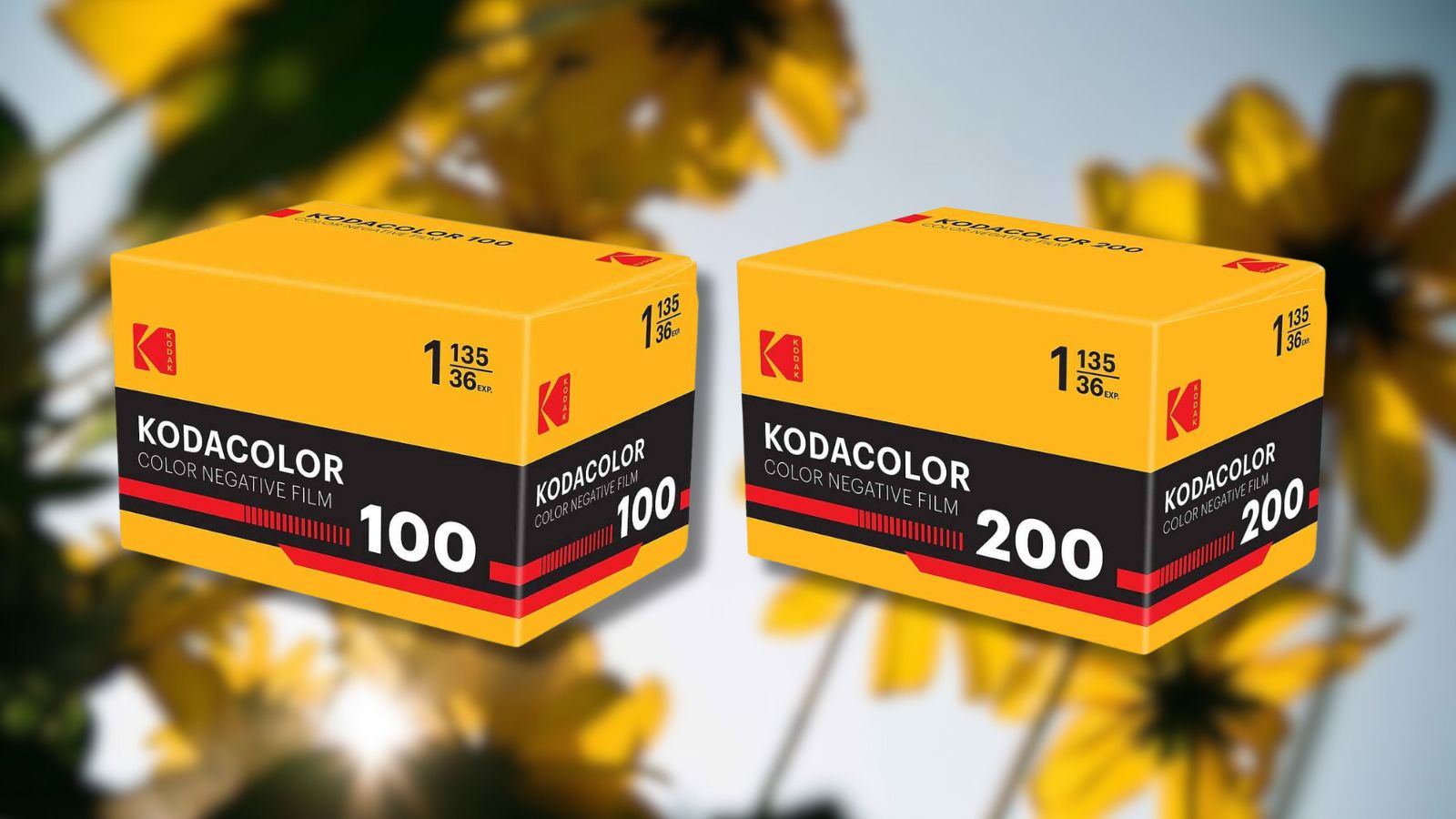
Eastman Kodak Releases KODACOLOR 100 & KODACOLOR 200 35mm Films: But What Are They?
Eastman Kodak has released two 35mm films: KODACOLOR 100 and KODACOLOR 200. But what do they look like, are they truly new emulsions, and what could this mean for the future of colour film now that Eastman Kodak has entered the still photography market alongside distributor Kodak Alaris?
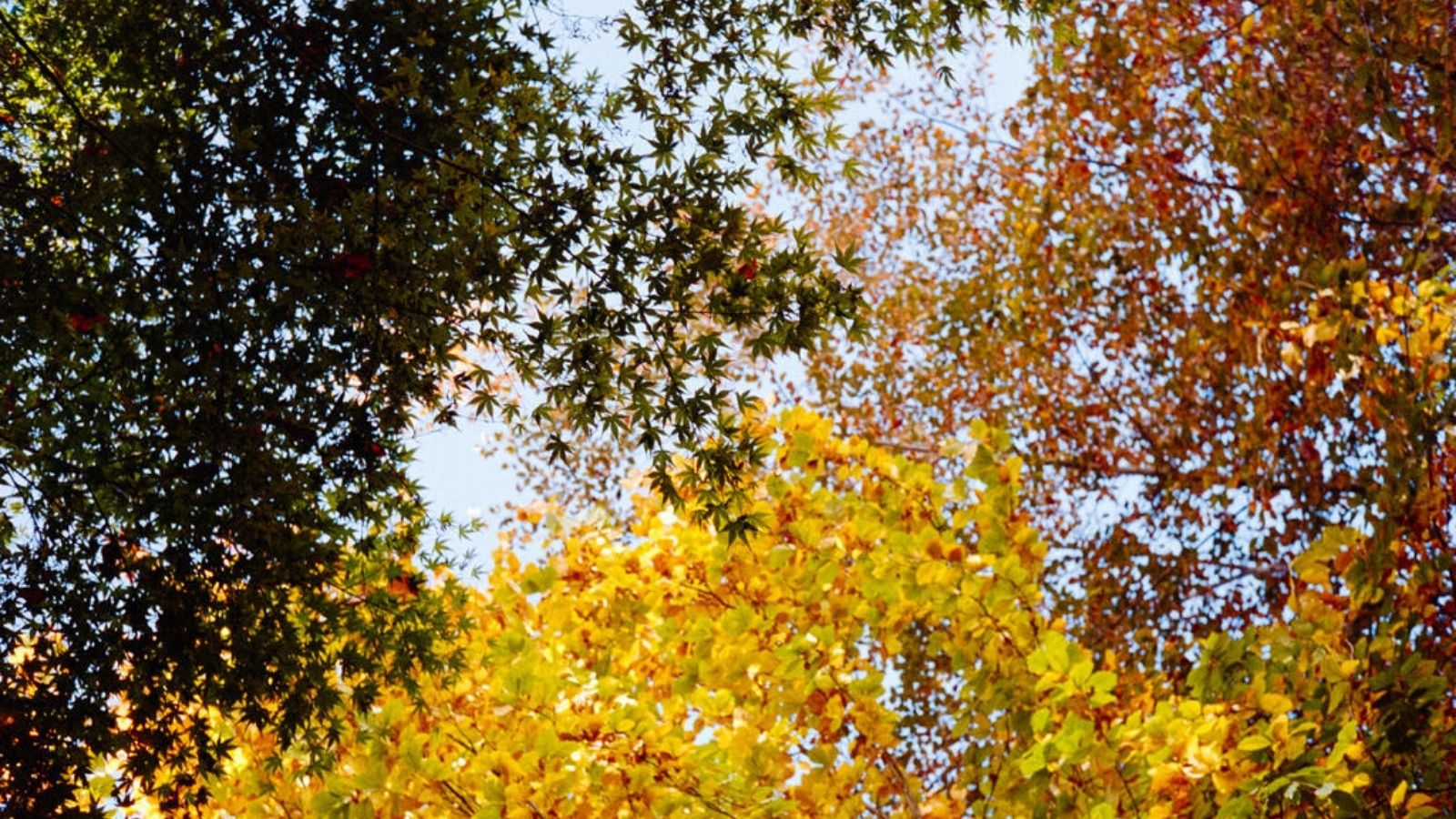
Best Films for Autumn Film Photography: Top Tips for Capturing The Season
Autumn is a magical season for film photography, bringing rich colours, atmospheric weather, and unique tones and textures that we can bring to life with a range of film stocks. Whether you're capturing the natural colours of fall or prefer moody monochrome, we've got film recommendations and shooting tips to help you photograph the season beautifully.
Subscribe to our newsletter 💌
Sign up for our newsletter to stay up to date on film photography news, sales and events:
Free Tracked Shipping
On all UK orders over £50
Passion For Film
An unbeatable range and an on-site lab
Our Customers Trust Us
Thousands of independent 5* reviews
All Deliveries are Carbon Neutral
Independently audited and verified by Planet
- Opens in a new window.

